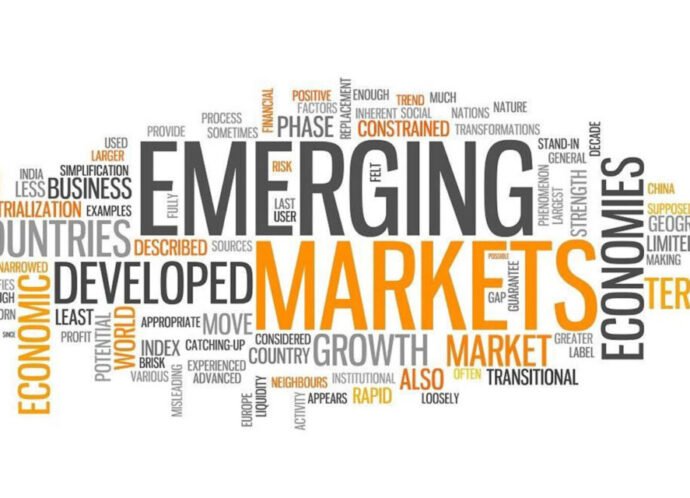Emerging markets growth to slow significantly in 2025

Against the backdrop of a more challenging external environment, Emerging Market and Developing Economies (EMDE) growth is forecast to slow significantly in 2025, to 3.8 percent, with only a modest projected pickup in 2026.
The expected rate of growth is well below pre pandemic averages and the pace that is needed to create sufficient jobs to meet working-age population growth and make progress in closing large per capita income gaps with advanced economies.
The deterioration in EMDE growth prospects is driven in large part by economies with a high degree of trade and investment openness. In these economies, large manufacturing sectors, high global value chain participation, and reliance on global financial markets amplify the negative spillovers from the recent shocks to global trade and confidence and the sharp rises in uncertainty and financial market volatility.
However, the softness in the EMDE outlook is anticipated to be broad-based, with growth expected to slow in nearly 60 percent of EMDEs in 2025. More generally, the capacity of many EMDEs to respond to negative shocks has diminished due to sharp pandemic-related increases in debt, elevated poverty rates, and waning official development assistance.
Prior to the recent deterioration in the external environment this year, activity in EMDEs had generally steadied over 2024, with domestic demand supported by generally benign financial conditions and solid credit growth.
Although domestic activity indicators remained relatively resilient over the first quarter of 2025, the rapid rise in uncertainty and slowdown in external demand have begun to act as a drag on activity.
Gauges of manufacturing activity, including headline manufacturing PMIs and goods trade indicators, have eased recently. Some trade-exposed EMDEs, such as Malaysia, Mexico, Romania, and Viet Nam, have seen the new export orders component of the manufacturing PMI weaken markedly since November amid increasing global trade policy uncertainty.
On the services side, PMIs have remained in expansionary territory but nonetheless have trended lower this year. High frequency consumption indicators also point to a similar dynamic, with both consumer confidence and retail sales losing some momentum in recent months.
Nonetheless, the so-far generally resilient trends are expected to lose momentum amid the sharp rise in uncertainty following increases in trade restrictions and other policy shifts.
Growth has continued to diverge across EMDEs so far in 2025, with a slower pace of activity in some commodity-exporting EMDEs and somewhat more solid conditions across other economies.
The weaker performance among the former was mostly concentrated in energy exporting economies and related to softness in global energy demand; ongoing OPEC+ production cuts; notable declines in commodity prices amid rising trade tensions, which weighed on net exports, revenues, and investment; and new sanctions on some oil-exporting economies.
Prior to the deterioration in the external environment, earlier activity readings had modestly surprised to the upside in some large energy-exporting EMDEs, including Russian Federation, Saudi Arabia, and Nigeria, largely owing to domestic factors outside of the energy sector.
In commodity-importing EMDEs excluding China, activity had remained broadly steady before the sharp rise in trade tensions, supported by a pickup in private consumption and investment, with the latter benefiting from firm manufacturing activity.
Despite overall solid performance, some economies have seen a material weakening in activity in recent quarters, largely reflecting an increase in uncertainty related to domestic developments or rising trade barriers.


Against the backdrop of a more challenging external environment, Emerging Market and Developing Economies (EMDE) growth is forecast to slow significantly in 2025, to 3.8 percent, with only a modest projected pickup in 2026.
The expected rate of growth is well below pre pandemic averages and the pace that is needed to create sufficient jobs to meet working-age population growth and make progress in closing large per capita income gaps with advanced economies.
The deterioration in EMDE growth prospects is driven in large part by economies with a high degree of trade and investment openness. In these economies, large manufacturing sectors, high global value chain participation, and reliance on global financial markets amplify the negative spillovers from the recent shocks to global trade and confidence and the sharp rises in uncertainty and financial market volatility.
However, the softness in the EMDE outlook is anticipated to be broad-based, with growth expected to slow in nearly 60 percent of EMDEs in 2025. More generally, the capacity of many EMDEs to respond to negative shocks has diminished due to sharp pandemic-related increases in debt, elevated poverty rates, and waning official development assistance.
Prior to the recent deterioration in the external environment this year, activity in EMDEs had generally steadied over 2024, with domestic demand supported by generally benign financial conditions and solid credit growth.
Although domestic activity indicators remained relatively resilient over the first quarter of 2025, the rapid rise in uncertainty and slowdown in external demand have begun to act as a drag on activity.
Gauges of manufacturing activity, including headline manufacturing PMIs and goods trade indicators, have eased recently. Some trade-exposed EMDEs, such as Malaysia, Mexico, Romania, and Viet Nam, have seen the new export orders component of the manufacturing PMI weaken markedly since November amid increasing global trade policy uncertainty.
On the services side, PMIs have remained in expansionary territory but nonetheless have trended lower this year. High frequency consumption indicators also point to a similar dynamic, with both consumer confidence and retail sales losing some momentum in recent months.
Nonetheless, the so-far generally resilient trends are expected to lose momentum amid the sharp rise in uncertainty following increases in trade restrictions and other policy shifts.
Growth has continued to diverge across EMDEs so far in 2025, with a slower pace of activity in some commodity-exporting EMDEs and somewhat more solid conditions across other economies.
The weaker performance among the former was mostly concentrated in energy exporting economies and related to softness in global energy demand; ongoing OPEC+ production cuts; notable declines in commodity prices amid rising trade tensions, which weighed on net exports, revenues, and investment; and new sanctions on some oil-exporting economies.
Prior to the deterioration in the external environment, earlier activity readings had modestly surprised to the upside in some large energy-exporting EMDEs, including Russian Federation, Saudi Arabia, and Nigeria, largely owing to domestic factors outside of the energy sector.
In commodity-importing EMDEs excluding China, activity had remained broadly steady before the sharp rise in trade tensions, supported by a pickup in private consumption and investment, with the latter benefiting from firm manufacturing activity.
Despite overall solid performance, some economies have seen a material weakening in activity in recent quarters, largely reflecting an increase in uncertainty related to domestic developments or rising trade barriers.



